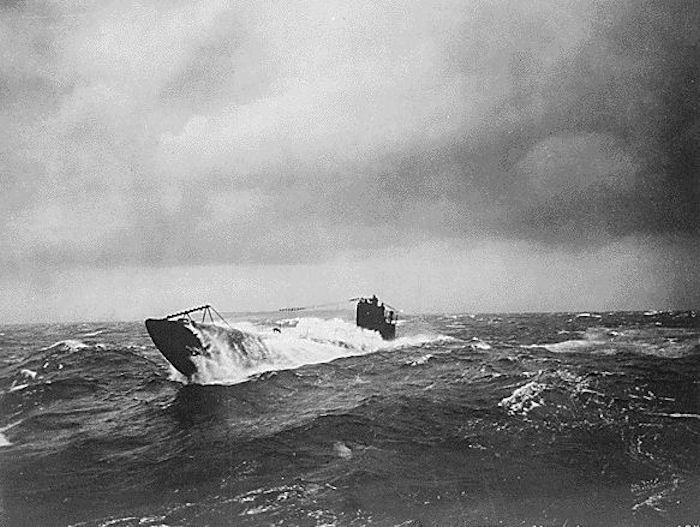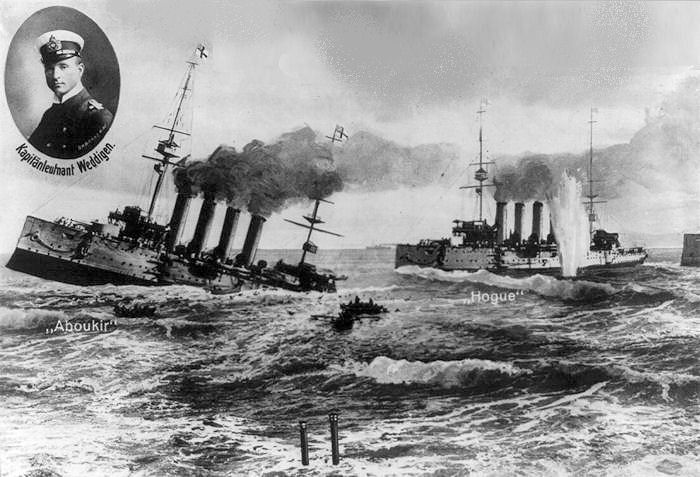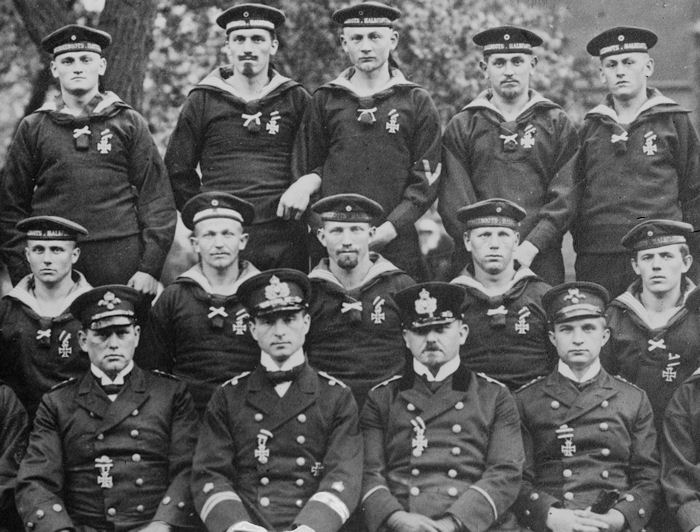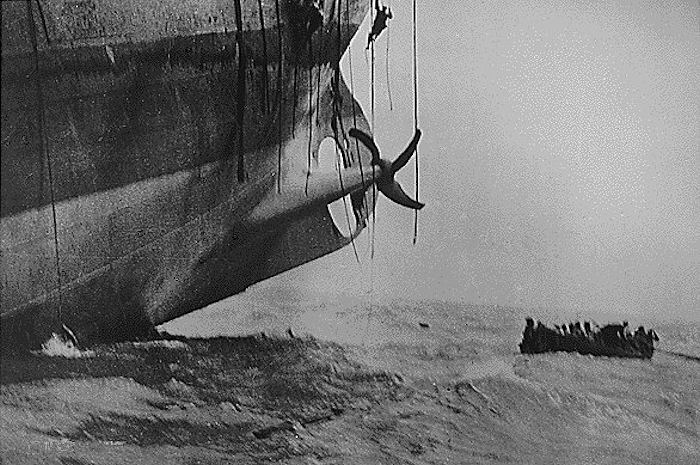

A German submarine of the UB Class in rough seas. At the outbreak of war, Germany had a small force of just 25 subs with six still under construction--compared to 90 active subs in the British Navy. Traditional minded German admirals had seen little war potential for submarines, preferring to rely on their super battleships. But in September 1914, just one month into the war, the spectacular destruction of three British warships by a single U-Boat changed everything and the sub fleet was enlarged tenfold. Below: A German illustration of that U-Boat feat shows U-9, commanded by Captain Otto Weddigen, sinking the British cruisers Aboukir and Hogue in rapid succession on September 22, 1914, in the North Sea. |

| Below: Officers and a portion of the crew of German U-Boat U-9. Captain Weddigen is second from left in the first row. The entire crew received the Iron Cross, second class, for sinking the three British cruisers. In March 1915, Weddigen was transferred to the new and larger U-29, then sank six merchant ships in the North Sea. But U-29 itself was sunk by the British on March 25, 1915, killing all hands. |

| German sub attacks intensified as the war progressed. Below: A last minute escape from a torpedoed ship. The ship's bow has already sunk into the waves, and her stern is slowly lifting out of the water. Men can be seen sliding down emergency escape ropes as the last lifeboat pulls away. |

Return to World War I Timeline - 1915
The History Place - World War I Index Page
The History Place Main Index Page
Copyright © 2009 The History Place™ All Rights Reserved
Terms of use: Private home/school non-commercial, non-Internet re-usage only is allowed of any text, graphics, photos, audio clips, other electronic files or materials from The History Place.